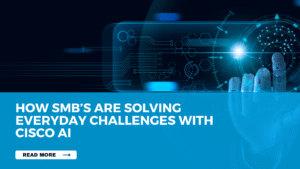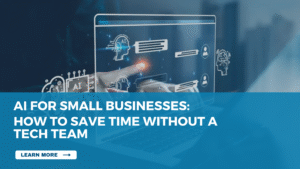You wouldn’t leave your storefront wide open overnight. So why do so many small businesses leave the digital lights on, doors unlocked, and passwords taped to monitors like it’s still 2005? The truth is, cyber threats aren’t just a big business problem. Hackers know that most small businesses don’t have robust protections in place, which makes them easier targets—and often, more lucrative ones. The good news? You don’t need a six-figure IT budget to make your systems harder to crack. You just need to treat your digital assets with the same seriousness you give your physical ones.
Building a Stronger Password Culture
If your business is still using “admin123” or your pet’s name followed by an exclamation point as the go-to password, it’s time for an intervention. Weak passwords are still the #1 entry point for attackers, and they’re ridiculously easy to fix. Conduct a quick training on how to make strong passwords or get your team onboarded to a password manager. Check out The Most Recommended Password Managers According to Reddit to find one that fits your needs.
Keeping Software and Systems Current
Yes, the endless “update available” pop-ups are annoying. But ignoring them is like skipping oil changes on your delivery van—it runs, until it doesn’t. Software updates often patch known vulnerabilities, and once those patches are public, cybercriminals actively look for businesses that haven’t installed them. Automate your updates where you can, or at the very least, put someone in charge of checking every week. A system that’s 95% updated is still 5% vulnerable.
Human Error Is the Real Malware
You can buy all the cybersecurity tools in the world, but if Karen in accounting clicks on a shady email link, it’s game over. Your people are your first—and often only—line of defense in an age where phishing scams are harder to spot. Run short, repeatable training sessions that teach employees to identify phishing tactics and how to report something suspicious. No one likes training, but being the reason client data gets compromised is a whole lot worse.
Learning the Language of Cybersecurity
If you often rely on outside help to handle basic tech issues, you don’t necessarily need a full degree to close the knowledge gap. Instead, targeted courses in IT, programming and cybersecurity can give you the skills you need, allowing you to learn at your own pace while still managing your business.
The Free Alarm System You’re Not Using
Logging in with just a password is like trusting a padlock in the age of smart thieves. Two-factor authentication (2FA) is one of the simplest, most effective ways to stop intruders from getting in, and most platforms offer it for free. 2FA adds a second lock to your digital front door, whether it’s a code sent via text, a prompt on an authentication app, or even a hardware token. Sure, it adds a few seconds to the login process. But compare that to the time you’ll waste recovering from a breach.
Taking Inventory of the Invisible
Shadow IT is a silent risk for small businesses. These are tools, apps, or software used by employees that the business owner doesn’t even know about. Like a free email platform your marketing intern signed up for, or a contractor’s third-party invoicing software. Every new app creates a potential new entry point for attackers. Every quarter, audit your tech stack. Ask: what’s being used? By whom? What data does it access? You can’t secure what you don’t see. You can also conduct a risk assessment with us to identify threats to your security posture.
Determining Who Can Touch What
You wouldn’t hand every employee a key to the safe, and yet, in the digital world, that’s often what happens. Many small businesses run on flat access—everyone can get into everything—which increases the blast radius if one account gets compromised. Use role-based access controls to make sure that employees only have access to the files, tools, and systems they actually need. It’s not about mistrust. It’s about managing exposure.
Backups Aren’t Optional
Imagine this: ransomware locks up your systems, and the only copy of your customer data is the one the attackers are holding hostage. Sound dramatic? It’s not. It happens every day. You need automatic, redundant backups—one in the cloud, and ideally one offline. Test those backups every month to make sure they actually restore properly. Because a backup you can’t use is just a fancy paperweight in the cloud.
Doing a DIY Risk Audit
You don’t need to be a tech wizard to figure out where your business might be vulnerable. Take a weekend, dig into your systems, and think like a hacker : “Where’s the weak spot?” Check your website, payment processors, customer data, and internal tools. If you were trying to break in, where would you start? That mindset helps you spot potential risks (before someone with bad intentions does) and lets you prioritize what to fix first.
Small businesses often think they’re too small to be noticed. That kind of thinking is outdated—and dangerous. The reality is, if you’re online, you’re a target. But if you start treating cybersecurity like just another part of doing business—like inventory checks, payroll, or customer service—it becomes manageable, even for a small team. Start where you are, level up where you can, and build a digital environment that’s as secure as the one you’ve built in the real world.
Discover how Molaprise can elevate your business with cutting-edge cloud, infrastructure, and cybersecurity solutions, ensuring your organization stays ahead in the digital age.
Written By: Marissa Perez [mperez@businesspop.net]



